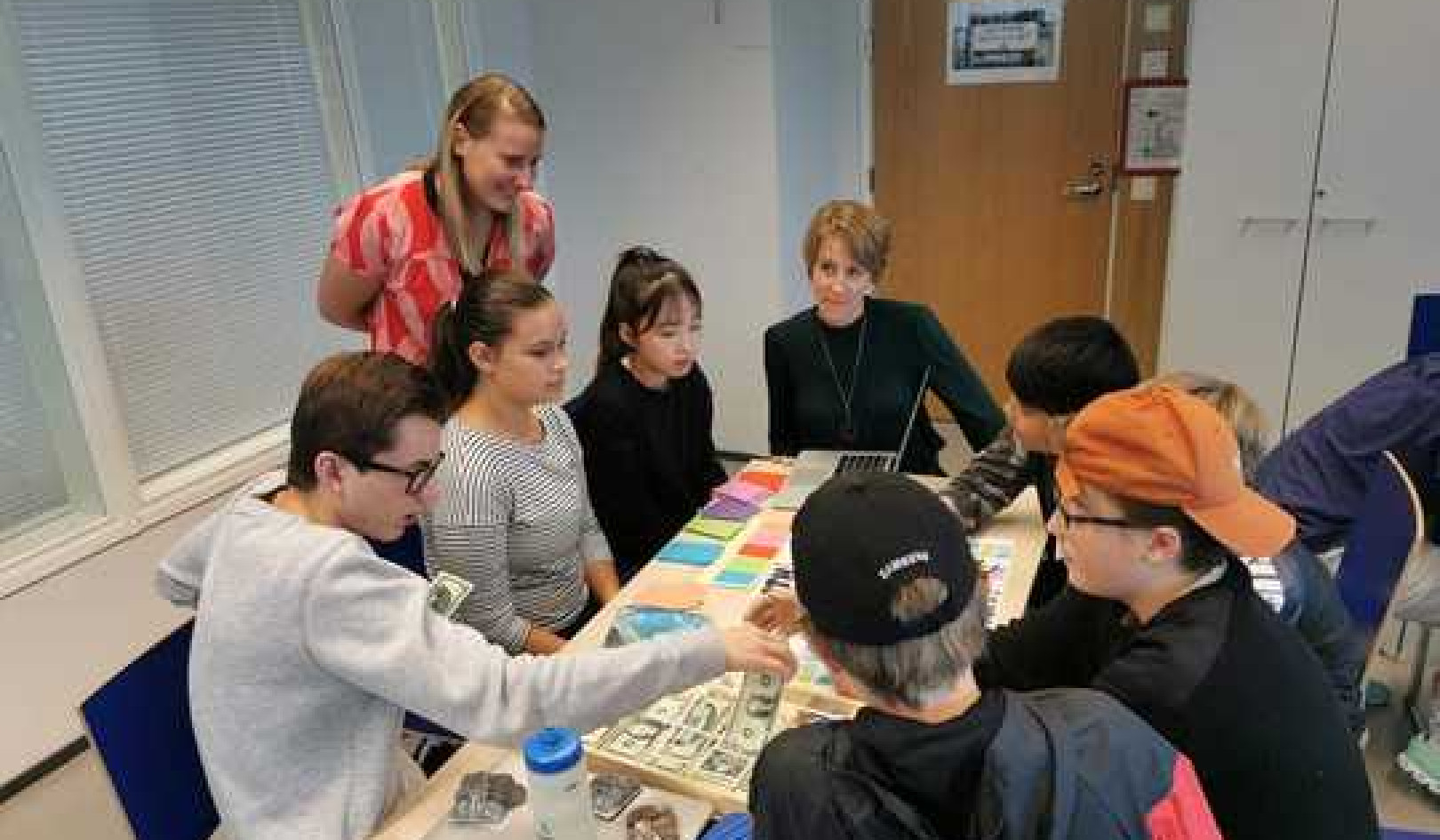
If you'll pardon the levity, most of us are afraid of fear. We think it's a bad thing. We know it's a scary thing. We're afraid of becoming afraid, scared of becoming scared. We know all too well how our fears can escalate into terror, and how our terror can either translate into frantic action or into paralyzing inertia. Because so many of our experiences with fear have been negative, we fail to see fear as positive or useful. It is both. Let me repeat: Fear is positive and useful.
Fear is a blip on the radar screen of our consciousness. Fear tells us "Check this out." It is something we catch out of the corner of our eye. It enters our thoughts the way a dark shadow looms across a doorway. "Is someone there?" we may gasp. Yes, someone is there. Often it is a perception spoken by a part of ourselves that we have neglected and failed to attend. Fear asks that we check something for clarity. Fear requires action, not assurance.
As creative beings, we are intricate mechanisms. We have fine-tuned sensing mechanisms that extend beyond the ordinary realm of five senses. Sometimes we feel something large and good is about to happen. We wake up with a sense of anticipation and openness. At other times, that very same openness brings to us a sense of foreboding. If we have bought into the currently popular spiritual position that fear is somehow "bad" or even "unspiritual," we will try to dismiss our fear without exploring its message.
"Don't feel that way," we will tell our fearful selves. "What's wrong with you?" By focusing on ourselves as the probable source of anything "wrong," we blind ourselves to the possibility that there might, in fact, be someone or something wrong in our environment.
Pit-of-the-stomach Sense of Apprehension
Edward, a playwright, was committed to a large production of his newest and best play. The producer was all smiles and good vibes, all sunny promises and projections -- yet Edward kept fighting a pit-of-the-stomach sense of apprehension in the man's presence.
"Stop it, Edward. What is this? Do you have some neurotic fear of success?" Edward's self-attacks were merciless as his fears continued to mount. "I am afraid this producer is too good to be true," Edward's instincts told him in the form of bouts of insomnia and a few telling dreams about children's games in which the producer refused to play by the rules. As the dates for preproduction moved closer, Edward felt his fears rising further.
"It's all handled," the producer assured him, but Edward could not be assured. Beating himself up for "groundless fears," Edward finally picked up the phone and asked a few people a few questions. He learned that his producer wasn't producing anything. The venue was not locked down. Ads had not been placed. Deal memos for refreshments and concessions had not been finalized.
"I am so glad you called," a few people told Edward, "I need to be able to plan my schedule and, without a firm commitment on your side, I can't really do it."
Edward's producer was not productive. Edward's fears were not groundless, but well founded. The exploratory actions that Edward took -- finally -- on his own behalf taught him that he was traveling in company he could not afford. A few more phone calls and Edward learned that his producer's actions and attitudes had left a trail of burned bridges. Edward could not afford to have his name linked with a bad apple. He was involved with an opportunist, not an opportunity. Reluctantly but appropriately, Edward pulled the plug and disassociated himself from his troublemaking friend.
"I am so relieved you did that," a friend phoned to say. "I didn't know how to tell you," another caller said. "I hear you might be looking for a new producer and I would love to work with you," a third caller proposed.
Edward and his new producer worked rapidly and effectively. Edward experienced none of the mysterious fears and misgivings he had previously. His fear had truly been a messenger, and the message had been "Edward, you can do better and treat yourself better. You are right, here, to fear the worst."
Get Still and Listen
When fear enters our lives, it is like a mouse scurrying across the floor of our creative consciousness. Did I actually see something there, or was it a trick of the light? we wonder. We get still and listen. Do we hear a faint rustling? Is that a tap of a twig on the window?... there it is again. This time we turn on the overhead light. We gently move the furniture away from the wall.
Striving to still our hammering heart, we focus the flashlight of our consciousness into the dark and neglected corners, where we see, "Oh. I do have a mouse." Or "I have a dust ball the size of a healthy rat. I need to vacuum in here." In short, respected as a messenger, fear asks us to take a more accurate reading of our true perceptions to listen to all parts of our consciousness with care. As a rule of thumb, fear is never groundless. There is almost always some grounding action we can take in response to our fears.
Often we are so quick to label our fears neurotic or ill based or paranoid that we do not ask what signal our fear is really sending.
When you feel afraid, tell yourself, "This is good, not bad. This is heightened energy available for productive use. This is not something to medicate -- or meditate -- away. This is something to accept and explore." Ask yourself
1. What signal is my fear sending me?
2. What affectionate name can I give to this messenger part of myself?
3. What grounded action can I take to respond to this fear?
Lack of Accurate Information?
Many fears are based on a simple lack of accurate information. Rather than take a small exploratory action in a needed direction -- say, finding a new voice teacher or signing up for a computer class -- we allow our fears to be the bogeyman who keep us from entering the gates to our dreams. "I'm afraid my voice may not be strong enough" translates into "Strengthen your voice."
Each of us has fears that are particular to our own needs. When we listen to our fears with tenderness and care, when we accept them as messengers rather than as terrorists, we can begin to understand and respond to the unmet need that sends them forward. When we employ humor and tenderness to our fearful selves, they will often stop shaking long enough to deliver a needed message.
TASK: Admit Your Fears
Very often the most damaging aspect of our fears is the sense of isolation and secrecy that they breed in us. We are afraid and we are afraid to admit we are afraid. Closeted alone with our fears, we forget that we are never alone, that we are accompanied at all times by a benevolent higher power who has sympathy and solutions for our problems.
Take pen in hand. The tool you are now asked to learn is extremely powerful and positive. It can be used in all times of emotional duress and it can be applied to any and all problems, personal or professional. This tool is affirmative prayer, and it works by singling out each negative situation and "claiming" divine attention and intervention upon our behalf. Let us say the problem is fear-born procrastination on entering a creative project. The prayer might go something like this:
"I am guided carefully and expertly exactly on how to begin work on my new project. I am shown carefully and clearly each step to take. I am supported fully and happily in taking each step into fruitful work on this new project. I intuitively and accurately know exactly how to begin and what to do to begin correctly."
In writing out affirmative prayers, it is important that we do not ask for help, we affirm that we are receiving it. Affirmative prayer is not a prayer of petition. It is a prayer of recognition and acceptance of the divine help that is at hand. Very often the action of writing an affirmative prayer clears away fear from our lens of perception. We suddenly see that we are guided, that divine mind is answering our request for help and support. We often intuitively know the right action to take and feel within ourselves the power to take that action. Fear becomes a cue for prayer and a deepened sense of our spiritual creative companionship.
Once you have written out your affirmative prayer, choose the most personally powerful and resonant phrase in it to use as a mantra while you walk. Perhaps you wrote "My fearful self is clearly guided." You can distill that still further to "I am clearly guided," and you can walk with that reassuring thought until it begins to take on emotional weight.
Reprinted with permission of the publisher,
Tarcher/Putnam Publishing. ©2002.
www.penguinputnam.com
Article Source
Walking in This World: The Practical Art of Creativity
by Julia Cameron.
 Walking in This World picks up where Julia Cameron's bestselling book on the creative process, The Artist's Way, left off to present readers with a second course—Part Two in an amazing journey toward discovering our human potential. Full of valuable new strategies and techniques for breaking through difficult creative ground, this is the "intermediate level" of the Artist's Way program.
Walking in This World picks up where Julia Cameron's bestselling book on the creative process, The Artist's Way, left off to present readers with a second course—Part Two in an amazing journey toward discovering our human potential. Full of valuable new strategies and techniques for breaking through difficult creative ground, this is the "intermediate level" of the Artist's Way program.
Info/Order this book (paperback), or Audio CD (abridged) or Kindle edition.
About the Author
JULIA CAMERON has been an active artist for more than thirty years. She is the author of numerous books of fiction and nonfiction, among them The Artist's Way, The Vein of Gold, and The Right to Write, her bestselling works on the creative process. A novelist, playwright, songwriter, and poet, she has multiple credits in theater, film, and television. Julia divides her time between Manhattan and the high desert of New Mexico.
More books by this Author
at InnerSelf Market and Amazon




























